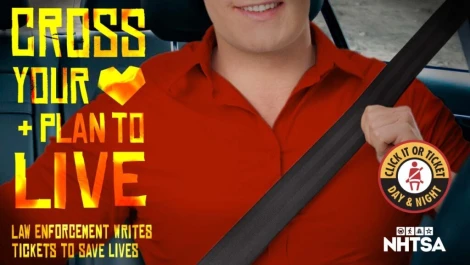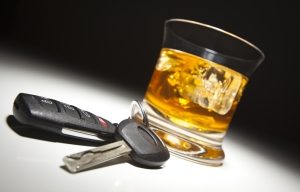
Utilizing a seatbelt can be the difference between life and death for many auto accidents, and the severity of its use is immeasurable. As we close in on Memorial Day weekend, the Click It or Ticket Campaign from the NHTSA runs from May 22nd to June 4th. As part of this campaign, your friends at Jones & Swanson are reminding readers just how important it is to buckle up when you drive.
In these upcoming weeks, you will likely notice more law enforcement emerging to reiterate the importance of wearing seatbelts, as it is the law, and motorists will face penalties for not using seat belts.
Why You Should Wear A Seatbelt
Seatbelt usage has proven time and time again to be the best way to protect yourself in the event of an accident. Not wearing a seatbelt increases the risk of physical injury or being ejected from your vehicle.
According to the NHTSA, in 2021 alone, 11,813 passenger vehicle occupants killed in accidents were not wearing a seatbelt. Among young adults (18 to 34) killed, 59% were not wearing a seatbelt. That’s the highest percentage of any age group. That also leads to the concern that parents are not stressing the importance of wearing a seatbelt to their children.
It is important now more than ever to teach your children and teen drivers to always wear a seatbelt, lest they fall victim to catastrophic injury or even worse, death.
The proper way to buckle your seatbelt from the NHTSA is to have your shoulder belt across your heart, not on your neck, and the lap belt across your hips, not on your stomach. Never put the shoulder belt behind your back or under your arms, as this can lead to injury.
Common Misconceptions About Seatbelt Usage
- “Seatbelt use will harm pregnant women.”
- If a seatbelt is worn properly over the heart and hips, under your belly, you remain at lower risk of being seriously harmed in the event of an accident, as compared to not wearing a seatbelt.
- “The airbag is all I need to be safe.”
- Airbags alone cannot protect you fully in the case of an accident. They are merely meant to act as extra protection.
- “I don’t need to wear a seatbelt in the backseat.”
- Just because the rate of injury is less for rear passengers than for front seat passengers, it doesn’t make it zero. As a backseat passenger, you can still be ejected from the windshield at an even harsher speed than the driver.
- “I’m not driving that fast to need a seatbelt!”
- Even at speeds of 25 MPH, you can experience injury. And even worse is that in low-impact accidents, your airbags may not deploy, leaving a seatbelt to be your only option. There’s also always the chance that another vehicle will hit yours while you are at a total standstill in traffic, at a red light or stop sign.
What Can You Do To Improve Safety?
Always check to make sure every passenger (including yourself) is buckled up before you drive. And as a passenger, do not let someone drive without wearing a seatbelt. There are no excuses for not wearing one.
It’s The Law.
As a reminder, Georgia law requires all persons riding in the front seat to wear a seatbelt, and all passengers between the ages of 8-15 to wear a seatbelt regardless of their position in the vehicle.
Jones & Swanson is here to remind you to #ClickItorTicket every time you drive!
if You Or Someone You Know Are Injured In A Car Accident, Please Call Jones & Swanson At (770) 427-5498 Or contact Us Online To Discuss Your Legal Options During A Free Consultation.
Categories: Auto Accidents, Georgia Laws, Seatbelt Safety




